

Home » Weekly Blog » Exploring the Mystical Tombs of the Valley of the Kings: A Guide to Must-See Ancient Wonders
Nestled on the west bank of the Nile River, amidst the golden sands of the Egyptian desert, lies a site shrouded in mystery and grandeur—the Valley of the Kings. Recognized as the final resting place for many pharaohs of the New Kingdom, this ancient burial ground is a testament to the rich history and unparalleled craftsmanship of ancient Egypt.
The Valley of the Kings served as the primary burial site for royalty during the New Kingdom period (approximately 1539–1075 BCE). This era marked the pinnacle of Egypt’s power and influence, witnessing the construction of awe-inspiring monuments and the flourishing of art and culture. Pharaohs chose this secluded valley for its strategic location, safeguarding their elaborate tombs from tomb robbers and preserving the sanctity of the afterlife journey.
In the ancient Egyptian belief system, the afterlife held paramount importance. The meticulous construction of tombs within the Valley of the Kings was not merely a testament to earthly wealth but a means to ensure a successful transition to the afterlife. Elaborate burial rituals, intricate hieroglyphics, and carefully curated artifacts within these tombs provide a captivating glimpse into the religious and cultural practices of a civilization that revered its pharaohs as divine rulers.
As we embark on this virtual journey, our aim is to guide you through the must-see tombs within the Valley of the Kings. We’ll delve into the captivating narratives of pharaohs, explore the architectural marvels that have withstood the sands of time, and offer practical insights to enhance your exploration of this ancient necropolis. Join us in unraveling the secrets of the Valley as we step back in time to witness the splendor of ancient Egyptian civilization
The Valley of the Kings finds its roots in the New Kingdom, a period stretching from the 16th to the 11th century BCE. This epoch marked the zenith of ancient Egyptian civilization, characterized by unprecedented political stability, military prowess, and cultural achievements. As pharaohs sought to immortalize their legacy, the Valley emerged as the chosen ground for their eternal rest.
Located on the west bank of the Nile near modern-day Luxor, the Valley of the Kings served as the exclusive burial ground for New Kingdom pharaohs. The strategic placement, surrounded by natural cliffs and guarded by the deity Hathor, symbolized the transition from earthly existence to the afterlife. Each tomb within this sacred valley was meticulously designed to house not only the physical remains of the pharaoh but also the essential elements required for a prosperous journey into the realm of the dead.
In ancient Egyptian cosmology, death was not the end but a continuation of life in another realm. The Valley of the Kings preserves the intricate burial rituals that facilitated this transcendence. Elaborate funeral processions, mummification, and the inclusion of possessions and provisions in the tombs were all aimed at ensuring the pharaoh’s safe passage into the afterlife. The Valley stands as a testament to the meticulous planning and unwavering belief in the eternal cycle of life and death.
The Valley of the Kings, while created with the intent of preserving the past, continues to surprise and intrigue. Modern archaeological efforts have unearthed new tombs, providing fresh perspectives on the lives and beliefs of ancient Egyptians. Ongoing research and preservation initiatives aim not only to safeguard these archaeological wonders but also to deepen our understanding of the New Kingdom and the illustrious figures interred within the Valley’s hallowed grounds.
Geographical Marvel: Situated near the modern city of Luxor, the Valley of the Kings stands as a testament to ancient Egyptian ingenuity, harmonizing seamlessly with the natural landscape.
Getting There: Accessible by road or boat along the Nile, Luxor serves as the gateway to the Valley. A short drive or boat ride brings you to the threshold of this historic necropolis.
Entrance Fees: Obtain detailed information on ticket prices, which often include access to multiple tombs. Consider purchasing a comprehensive pass for a more immersive experience.
Opening Hours: Plan your visit during the official opening hours, usually from early morning until late afternoon. Keep in mind that the desert heat can be intense, so early or late visits are recommended.
Expert Guidance: Engage in the expertise of knowledgeable guides who can provide historical context, intriguing anecdotes, and insight into the symbolism and significance of the tombs.
Audio Guides: Many sites offer audio guides in multiple languages, providing a flexible and informative way to explore the Valley at your own pace.
Educational Materials: Equip yourself with books or online resources beforehand to deepen your appreciation for the historical and cultural richness of the Valley of the Kings.
Cultural Sensitivity: The Valley is a sacred site; ensure your attire is modest and respectful of the cultural significance of the place.
Photography Etiquette: Be mindful of photography restrictions within the tombs. Flash photography is often prohibited to preserve the vibrant colors of ancient wall paintings.
Tomb Selection: Plan your visit by prioritizing the must-see tombs based on your interests and the historical significance of each pharaoh.
Footwear and Comfort: Wear comfortable, closed-toe shoes suitable for walking, as exploring the Valley involves traversing uneven terrain.
Hydration: Bring ample water to stay hydrated, especially in the desert climate. Consider a hat and sunscreen for added protection against the sun.
By planning your visit thoughtfully, you’ll be better equipped to immerse yourself in the awe-inspiring wonders of the Valley of the Kings, ensuring a memorable and enriching experience.

A Young Pharaoh’s Legacy: Tutankhamun, often referred to as King Tut, ascended to the throne at a tender age and ruled during the 18th dynasty. His reign was relatively short but left an indelible mark on ancient Egyptian history.
Discovery by Howard Carter: In 1922, the British archaeologist Howard Carter unearthed the virtually intact tomb of Tutankhamun, unlocking a treasure trove of artifacts that had been undisturbed for over 3,000 years.
The Golden Mask: King Tut’s iconic funerary mask, crafted in exquisite detail, is one of the most famous artifacts in the world.
Funerary Furniture: Elaborate pieces of furniture, including the golden throne and chariots, reflect the opulence reserved for the afterlife journey of a pharaoh.
Mysterious Deaths: The premature deaths of Tutankhamun and those associated with his reign have fueled speculation and intrigue, adding a layer of mystery to his tomb.
Architectural Significance: Explore the layout and architectural features of the tomb, such as the antechamber, burial chamber, and treasury, designed to house the pharaoh’s earthly possessions and facilitate his journey into the afterlife.
Global Impact: King Tut’s tomb and its treasures sparked a renewed fascination with ancient Egypt in the modern world, influencing art, fashion, and popular culture.
Ongoing Research: Ongoing studies continue to shed light on Tutankhamun’s life, death, and the intricacies of the New Kingdom period, adding depth to our understanding of this enigmatic pharaoh.
By exploring the Tomb of Tutankhamun, visitors to the Valley of the Kings embark on a journey into the life and legacy of a young pharaoh whose burial site has captured the world’s imagination for nearly a century.
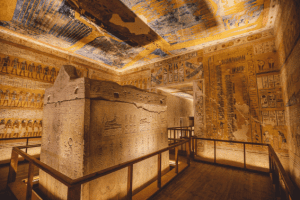
The Great Pharaoh: Ramses II, also known as Ramses the Great, stands as one of ancient Egypt’s most powerful and influential pharaohs. His reign during the 19th dynasty left an indelible mark on the nation’s history.
Military Achievements: Ramses II’s military exploits, notably the Battle of Kadesh, and prolific building projects, including the iconic temples of Abu Simbel, solidified his legacy as a formidable leader.
Grandeur in Design: KV7, Ramses II’s tomb, reflects the grandeur befitting a pharaoh of his stature. The intricate carvings and impressive scale of the tomb showcase the artistic prowess of the New Kingdom.
Hieroglyphic Narratives: Explore the detailed hieroglyphic inscriptions that adorn the tomb walls, narrating Ramses II’s life, victories, and divine connections.
Divine Depictions: Ramses II’s close association with various deities is vividly depicted in the tomb’s artwork. Explore the symbolism behind these representations and their significance in ancient Egyptian theology.
Funerary Rituals: Delve into the rituals depicted in the tomb, shedding light on the elaborate ceremonies conducted to ensure Ramses II’s successful journey to the afterlife.
Royal Legacy: Ramses II’s tomb offers insights into the political and cultural landscape of ancient Egypt during his reign, providing a unique perspective on the 19th dynasty.
Family Ties: Discover the familial connections and relationships depicted within the tomb, offering a glimpse into the personal life of this iconic pharaoh.
Preservation Challenges: Explore the challenges faced in preserving Ramses II’s tomb, considering environmental factors, tourism impact, and ongoing conservation efforts.
Visitor Experience: Gain an understanding of the visitor experience within the tomb, considering any restrictions or guidelines in place to protect this historical treasure.
The Tomb of Ramses II in the Valley of the Kings stands as a testament to the enduring legacy of a pharaoh whose influence reached far beyond his lifetime. Visitors can immerse themselves in the art, history, and grandeur that define this remarkable tomb.
Queen Pharaoh: Hatshepsut, one of the few female pharaohs in ancient Egypt, defied convention by ascending to the throne during the 18th dynasty. Her reign was marked by prosperity and innovation.
Architectural Legacy: Hatshepsut’s mortuary temple at Deir el-Bahari and her tomb, KV20, reflect her commitment to architectural innovation and the assertion of her royal authority.
Location and Design: Situated in a remote location within the Valley, KV20 boasts a unique layout and architectural features that set it apart from other tombs. Explore the reasons behind the choice of location and its symbolic significance.
Semi-Circular Design: The semi-circular shape of the burial chamber and the use of vibrant colors in the decorations contribute to the distinctive aesthetics of Hatshepsut’s tomb.
Artistic Masterpieces: Admire the intricate wall reliefs that narrate Hatshepsut’s life story, showcasing her achievements, religious practices, and interactions with the divine.
Symbolism in Art: Uncover the symbolic elements within the tomb’s artwork, shedding light on Hatshepsut’s efforts to legitimize her rule and secure her place in the afterlife.
Legacy Challenges: Hatshepsut’s legacy faced challenges after her death, including attempts to erase her from historical records. Explore the controversies surrounding her reign and subsequent attempts at erasure.
Rediscovery: Learn about the rediscovery of Hatshepsut’s tomb and the impact it had on reevaluating her historical significance and contributions to ancient Egypt.
Modern Recognition: Hatshepsut’s remarkable story has gained admiration in modern times, challenging traditional gender roles and inspiring discussions about female empowerment.
Ongoing Research: Ongoing archaeological and historical research continues to provide new insights into Hatshepsut’s reign, contributing to a more nuanced understanding of this pioneering pharaoh.
The Tomb of Hatshepsut in the Valley of the Kings invites visitors to explore the unique narrative of a female pharaoh who defied conventions and left an indelible mark on ancient Egyptian history. As you step into KV20, you enter the world of a ruler whose legacy has transcended the sands of time.

Pharaoh of Renewal: Seti I, a prominent ruler of the 19th dynasty, ascended the throne with a vision of revitalizing ancient Egypt after periods of unrest. His reign is characterized by military successes and monumental construction projects.
Temples and Monuments: Seti I’s dedication to the gods is evident in the temples and monuments he commissioned, including the Great Hypostyle Hall at Karnak and the Temple of Osiris at Abydos.
Grandeur of KV17: Seti I’s tomb, KV17, is renowned for its sheer size and architectural complexity. Explore the intricate passageways, chambers, and the impressive burial chamber that reflects the pharaoh’s aspirations for the afterlife.
Ceiling Astronomy: Examine the astronomical ceiling in the burial chamber, adorned with detailed depictions of constellations and celestial beings, showcasing the ancient Egyptians’ astronomical knowledge.
Meticulous Craftsmanship: The burial chamber of KV17 is adorned with detailed reliefs and intricate carvings, portraying religious rituals, symbolic imagery, and scenes from Seti I’s life.
Sarcophagus of Alabaster: Seti I’s alabaster sarcophagus is a masterpiece of craftsmanship. Delve into the symbolism and religious significance behind the choice of materials and design.
Challenges in Preservation: Learn about the challenges faced in preserving KV17, including environmental factors, tourism impact, and the ongoing efforts to maintain the tomb’s structural integrity.
Visitor Experience: Gain insights into the visitor experience, considering any restrictions or guidelines in place to ensure the protection of this historical gem.
Dynastic Transition: Seti I played a crucial role in the transition between the tumultuous periods of the 18th dynasty and the flourishing of the 19th dynasty, setting the stage for the illustrious reign of his son, Ramses II.
Contribution to Egyptology: The discovery and exploration of Seti I’s tomb significantly contributed to the field of Egyptology, deepening our understanding of ancient Egyptian religious beliefs, rituals, and artistic expressions.
The Tomb of Seti I beckons adventurers into the heart of the 19th dynasty, offering a glimpse into the ambitions, achievements, and religious fervor of a pharaoh who left an indelible mark on the tapestry of ancient Egypt. As you step into KV17, you are immersed in the grandeur and spirituality that defined Seti I’s reign.
The Fourth Pharaoh of the Nineteenth Dynasty: Merneptah, the son of Ramses II, ascended the throne around 1213 BCE. His reign marked a period of transition and challenges, including conflicts with neighboring nations.
The Merneptah Stele: Merneptah is perhaps best known for the Merneptah Stele, an inscribed slab that contains the earliest known mention of the people of Israel.
Strategic Location: Explore the location of KV8 within the Valley, considering its proximity to other notable tombs and the significance of its placement.
Design and Layout: Delve into the architectural intricacies of KV8, examining its corridors, chambers, and burial chamber, which reflect the evolving styles of tomb construction during the 19th dynasty.
Wall Reliefs: Discover the wall reliefs that depict scenes from Merneptah’s life, religious rituals, and mythological themes. These detailed carvings provide insights into the pharaoh’s beliefs and the artistic conventions of his time.
Burial Chamber Decor: Uncover the decorative elements within the burial chamber, including the design of the sarcophagus and the symbolic motifs that adorn the walls.
Challenges and Achievements: Gain a deeper understanding of the historical context of Merneptah’s reign, including the challenges he faced and the legacy he left behind.
Political and Military Contributions: Explore Merneptah’s contributions to the political stability and military efforts of ancient Egypt, shedding light on the broader geopolitical landscape of the time.
Preservation Challenges: Consider the preservation challenges faced by KV8, such as environmental factors and the impact of tourism, and learn about ongoing efforts to safeguard this tomb.
Enhancing the Visitor Experience: Evaluate the visitor experience within KV8, taking note of any educational materials, guided tours, or technological enhancements that contribute to a more immersive exploration.
The Tomb of Merneptah (KV8) adds a unique dimension to the Valley of the Kings, offering visitors a chance to delve into the history and artistic achievements of a pharaoh whose reign bridged a critical period in ancient Egypt. As you step into KV8, you embark on a journey to uncover the lesser-known but equally captivating treasures within this revered necropolis.

Protective Attire: Opt for light, breathable clothing to shield yourself from the desert sun. A wide-brimmed hat and sunglasses provide additional protection.
Comfortable Footwear: The terrain within the Valley can be uneven. Choose sturdy, closed-toe shoes for comfortable exploration.
Water Supply: Bring an ample supply of water to stay hydrated throughout your visit. The desert climate can be arid, especially during peak daytime hours.
Timing is Key: Plan your visit during the early morning or late afternoon to avoid the intense midday heat.
Silence and Reverence: Maintain a respectful atmosphere inside the tombs. Keep noise to a minimum, and refrain from touching the walls or artifacts.
Follow Guidelines: Adhere to any specific guidelines provided by guides or site authorities to ensure the preservation of these ancient treasures.
Flash Restrictions: Many tombs prohibit flash photography to prevent damage to delicate wall paintings. Familiarize yourself with and respect these restrictions.
Capture the Moment: Use your camera or smartphone to capture the beauty of the Valley, but do so responsibly and without compromising the integrity of the site.
Expert Insights: Engage in a guided tour led by knowledgeable experts who can provide historical context, share intriguing stories, and offer deeper insights into the significance of each tomb.
Audio Guides: Consider using audio guides for a self-paced exploration, providing detailed information about the history and cultural context of the Valley.
Educational Materials: Familiarize yourself with the history and significance of the Valley of the Kings before your visit. Books, documentaries, or online resources can enhance your understanding and appreciation.
Interactive Apps: Some sites offer interactive apps that provide a virtual tour or additional information about specific tombs. Explore these resources to maximize your experience.
Exploring the Valley of the Kings is a remarkable journey through ancient history, and adhering to these practical tips ensures a more enjoyable and respectful visit. Whether you’re a history enthusiast or a casual traveler, these guidelines will enhance your experience as you unravel the mysteries of this captivating necropolis.
As we conclude our virtual exploration of the Valley of the Kings and its captivating tombs, we’ve embarked on a journey through the annals of ancient Egyptian history. The Valley, with its enigmatic allure, serves as a portal to a bygone era, where pharaohs sought to immortalize their legacy and ensure a prosperous journey into the afterlife.
From the iconic Tomb of Tutankhamun, with its treasures that have captivated the world, to the grandeur of Ramses II’s burial site, the Valley unfolds stories of power, ambition, and religious devotion. The Tomb of Hatshepsut offers a unique perspective, showcasing the triumphs of a female pharaoh, while the intricate Tomb of Seti I delves into celestial mysteries and the complexities of 19th dynasty Egypt.
Our journey also introduced the lesser-known marvel, the Tomb of Merneptah, shedding light on a pharaoh whose reign witnessed both challenges and contributions to the rich tapestry of ancient Egyptian civilization.
As you contemplate the significance of each tomb and the intricate details within, remember that the Valley of the Kings is not merely a collection of archaeological sites; it is a testament to the enduring human quest for immortality and the profound belief in an afterlife.
Whether you plan to embark on a physical journey to this sacred valley or continue your exploration through the pages of books and online resources, the mysteries of the Valley of the Kings invite you to unravel the secrets of a civilization that continues to captivate the world.
May your curiosity be kindled, and may the echoes of ancient voices guide you through the timeless wonders of this unparalleled necropolis. The Valley of the Kings stands as a testament to the resilience of history, waiting to share its tales with those who dare to listen and appreciate the grandeur of a civilization that once ruled the sands of time
Sign up to hear about our upcoming adventures, monthly newsletter, exclusive offers, and more!
Required*
Not Ready to book?
Get regular updates on upcoming tour and special promotions.


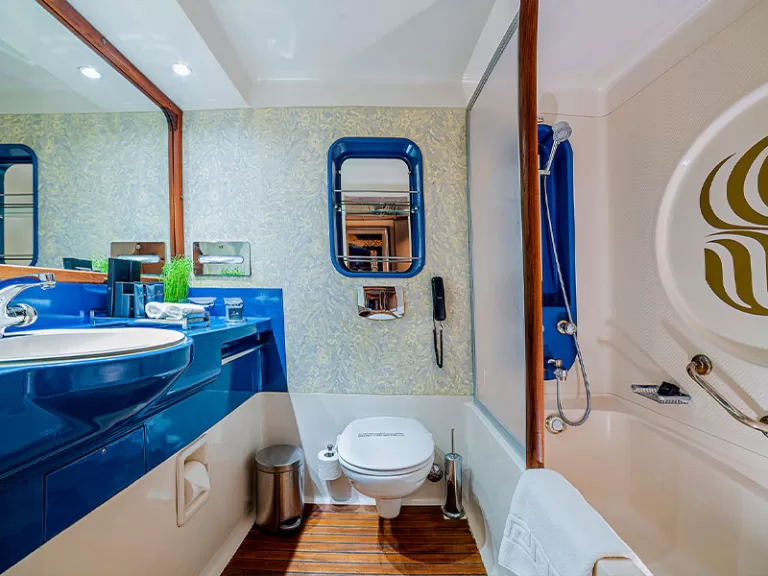

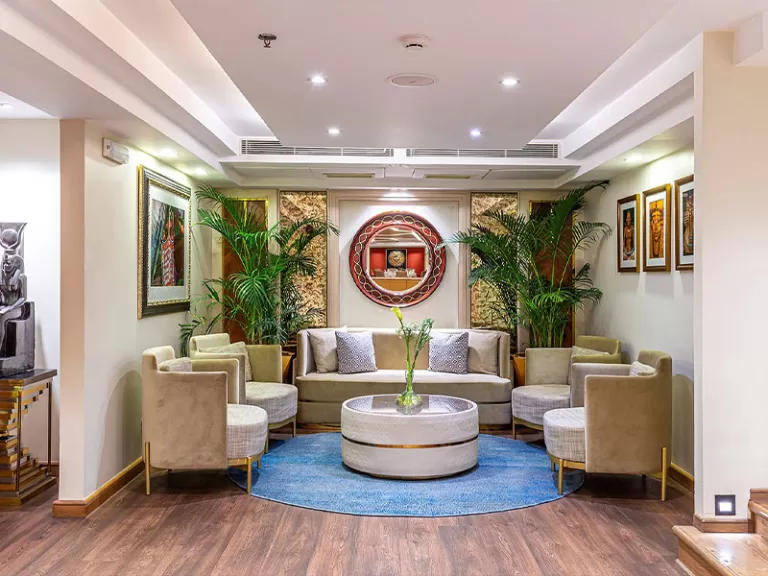
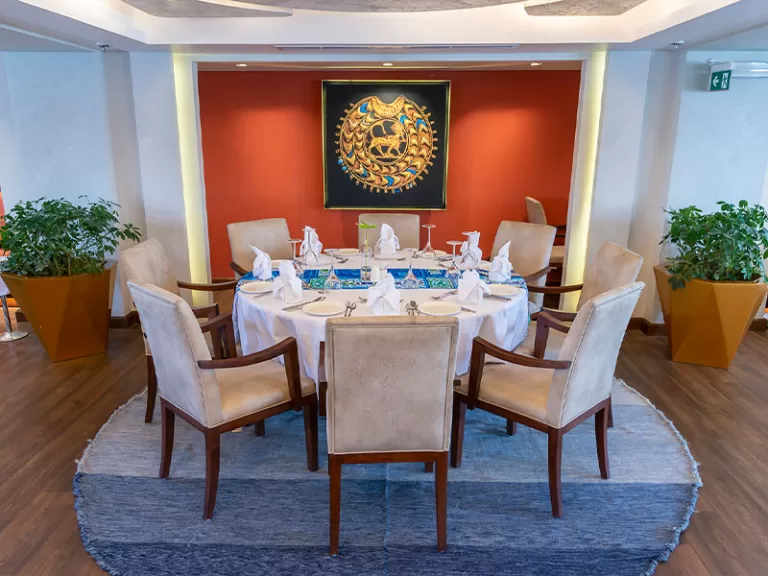
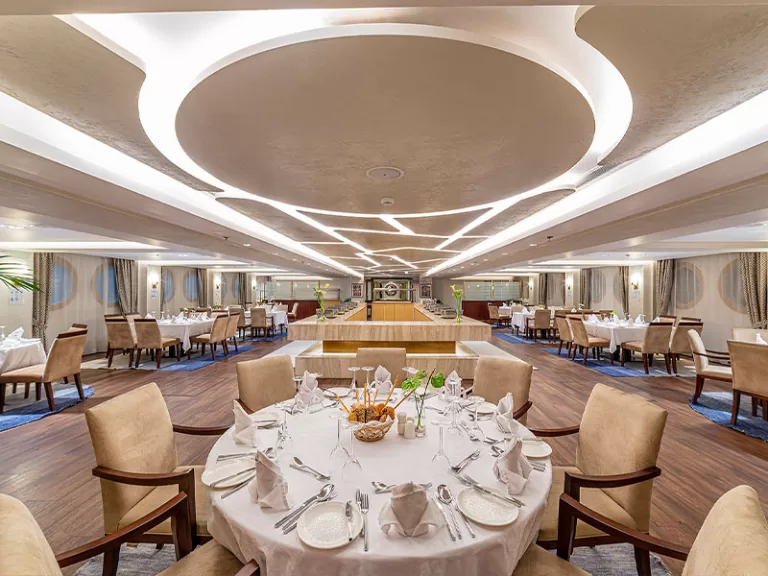
Sign up for our Mailing List to get updates on our current offerings.